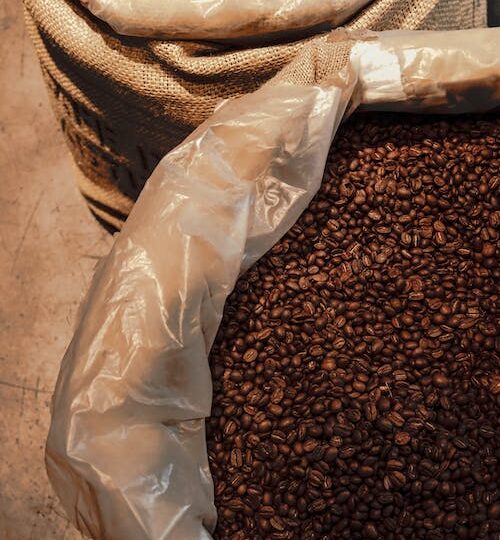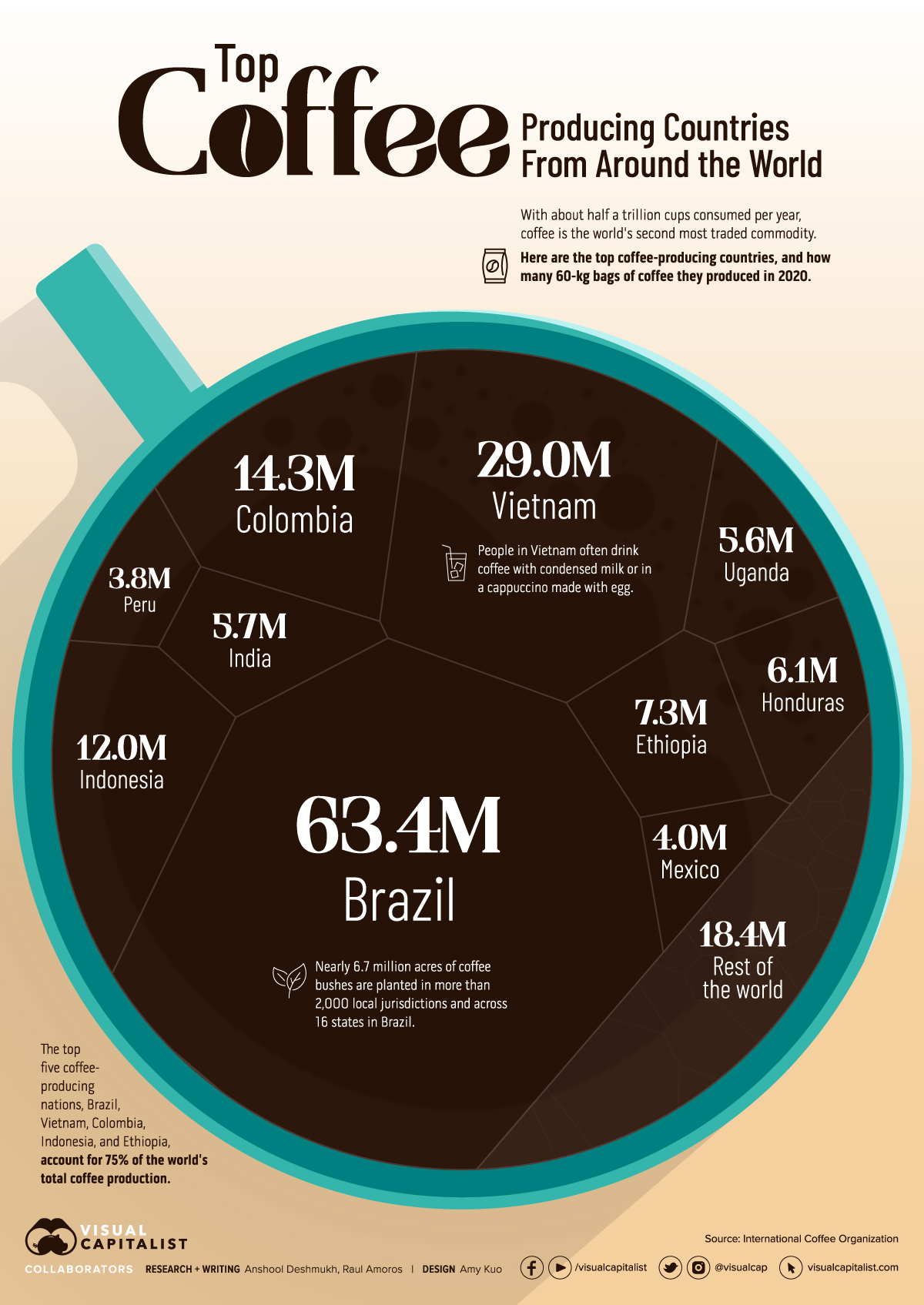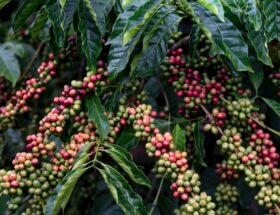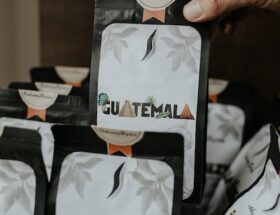
The Top 5 Coffee Producing Countries: Unraveling the Bean Belt
When it comes to coffee production, certain countries stand out as true powerhouses, influencing the global coffee supply significantly. In this article, we’ll explore the top coffee-producing countries and their unique contributions to the coffee industry. From Brazil’s massive output to Vietnam’s focus on robusta beans, each nation plays a vital role in shaping the world’s coffee culture.

https://www.visualcapitalist.com/worlds-top-coffee-producing-countries/
Table of Contents
The Top 5 Coffee Producing Countries
1. Brazil – The Coffee Giant
At the forefront of coffee production, Brazil reigns supreme, single-handedly supplying nearly 40% of the world’s coffee. Its vast coffee plantations, spanning over 27,000 square kilometers, thrive in regions like Minas Gerais, São Paulo, and Parana, thanks to a climate ideally suited for coffee farming. Unlike most coffee-producing nations, Brazil’s unique practice involves sun-drying the coffee cherries, resulting in unwashed coffee. In fact, Brazil’s 60-kilogram burlap bags have become the worldwide standard for measuring coffee production and trade.
2. Vietnam – Embracing Robusta
Vietnam found its niche in the global market by focusing on the less-expensive Robusta beans, known for their higher caffeine content and slightly bitter taste compared to Arabica beans. After economic reforms in the 1990s, coffee production in Vietnam skyrocketed. Today, the country accounts for more than 40% of the world’s Robusta bean supply. Vietnam’s remarkable coffee yields set it apart from other leading coffee-producing nations.
3. Colombia – The Juan Valdez Legacy
Colombia earned its fame as a coffee-producing nation through a captivating advertising campaign featuring a fictional coffee farmer named Juan Valdez. Colombian coffee is highly sought after for its aromatic, mild, and fruity flavors, making it a cherished beverage choice worldwide.
4. Indonesia – The Home of Exotic Beans
Indonesia boasts some of the rarest and most unique coffee varieties in the Western world, such as Kopi Luwak, which involves coffee beans that have been consumed and excreted by the Asian palm civet. The exclusivity of these beans translates to high prices, with a single cup ranging from $35 to $100.
5. Ethiopia – Birthplace of Arabica
Ethiopia proudly claims its position as the birthplace of Arabica coffee, a variety known for its full-flavored, down-to-earth, and full-bodied taste. Arabica coffee has become a global favorite, gracing the menus of countless cafes and restaurants worldwide.
Conclusion
These top coffee-producing countries, all located within the “Bean Belt” between the Tropic of Cancer and the Tropic of Capricorn, have shaped the coffee industry as we know it today. From Brazil’s immense output to Ethiopia’s prized Arabica beans, each nation’s unique contributions add depth and diversity to the world of coffee. As coffee enthusiasts, let us appreciate and celebrate the rich heritage of these countries while savoring each delightful cup of our favorite brew.









